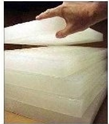
Is paraffin wax really so evil?
The soybean/soy wax industry has worked very hard and spent a fortune to convince the public that paraffin candles give off more toxins than soy or other plant-based wax candles.
Here is a response and article from the National Candle Association:
“There's absolutely no validity that paraffin candles are more hazardous or toxic than soy or beeswax candles. We have been working on this issue for years. To have some credible data, in about 2005, the NCA did a study on the emissions of several different types of waxes including soy, paraffin, beeswax, palm wax and stearin. The candles were burned under similar conditions and the combustion products were measured. Overall, they were almost the same. Surprisingly, beeswax was probably the worst. A summary of that study is posted on our website at:
The false statements about paraffin were really pushed by the soy candle suppliers. They basically said paraffin is toxic and soy is all natural and safe (which is probably true if you're going to eat it). But in a candle, once they are burned there is virtually no difference in the products of combustion.
Soy wax advocates keep citing a study done by the University of South Carolina in 2009. The author stated that soy produced no combustion products and paraffin produced a host of toxic materials. The NCA had this professor give a webinar on his data. We came to understand fairly quickly that his science was completely devoid of any credibility. First, he claimed that there were no measurable combustion products from soy wax. This goes against the laws of physics. He claimed certain combustion products He found would be impossible to generate from paraffin. When he was questioned with this he had no answers. During the webinar I pointed out to him that these combustion products that were so toxic were commonly used cleaning products in laboratories and that his glassware was likely contaminated. Again he had no response. By the end of the webinar it was clear that none of his science was credible. He basically got to a point where he refused to take any more questions, probably realizing that we knew his data was a scam. We later came to find out that study was being funded by the soybean industry. Not that this makes the data invalid, but his own science was completely undefendable. This data has never been published in a scientific journal because it would never be allowed based on the scientific impossibilities and inaccuracies of his work.”